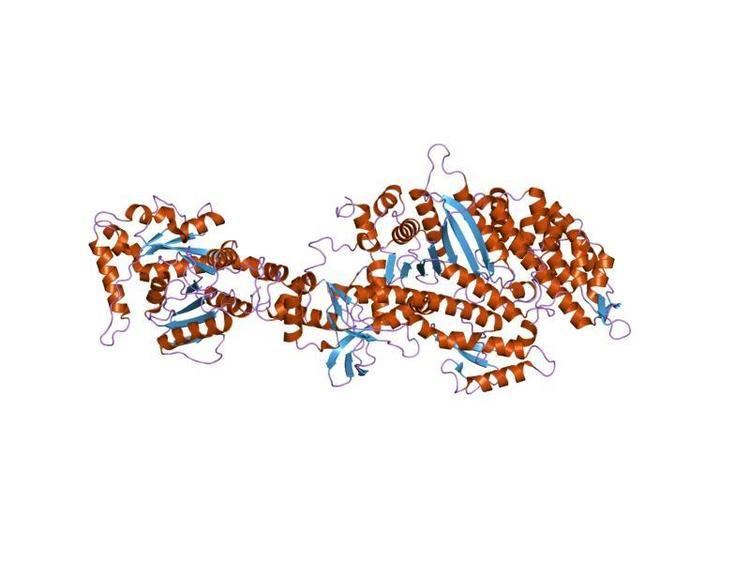Symbol Dynamin_N Pfam clan CL0023 PROSITE PDOC00362 | Pfam PF00350 InterPro IPR001401 Pfam structures | |
 | ||
Dynamin is a GTPase responsible for endocytosis in the eukaryotic cell. Dynamins are principally involved in the scission of newly formed vesicles from the membrane of one cellular compartment and their targeting to, and fusion with, another compartment, both at the cell surface (particularly caveolae internalization) as well as at the Golgi apparatus. Dynamin also plays a role in many processes including division of organelles, cytokinesis and microbial pathogen resistance.
Contents
Dynamin is part of the "dynamin superfamily," which includes classical dynamins, dynamin-like proteins, Mx proteins, OPA, mitofusins, and GBPs. Dynamin itself is a 96 kDa enzyme, and was first isolated when researchers were attempting to isolate new microtubule-based motors from the bovine brain. Dynamin has been extensively studied in the context of clathrin-coated vesicle budding from the cell membrane.
Function
As a vesicle invaginates, dynamin forms a spiral around the neck of the vesicle. Once the spiral is in place, it extends lengthwise and constricts through GTP hydrolysis. This lengthening and tightening of the coil around the vesicle neck causes it to break and results in the pinching off of the vesicle from the parent membrane. An example of a vesicle is a clathrin-coated pit.
To view a ‘cartoon’ image of the non-constricted and constricted state of dynamin spirals, please follow this link: http://dynamin.niddk.nih.gov/figure5.html. The first structure on the left is dynamin in its relaxed state. The structure on the right is dynamin in its constricted state. This shows the extent to which dynamin tightens and changes when GTP is converted to GDP.
This constriction is in part the result of the twisting activity of dynamin. This twisting required GTP hydrolysis. Dynamin is the only molecular motor known to have a twisting activity. Dynamin is a right-handed helix and has a right-handed twisting activity that explains its tightening and the reduction in the pitch of the helix described above.
Types
In mammals, three different dynamin genes have been identified:
Disease implications
Mutations in Dynamin II have been found to cause dominant intermediate Charcot-Marie-Tooth disease. Epileptic encephalopathy–causing de novo mutations in dynamin have been suggested to cause dysfunction of vesicle scission during synaptic vesicle endocytosis.
